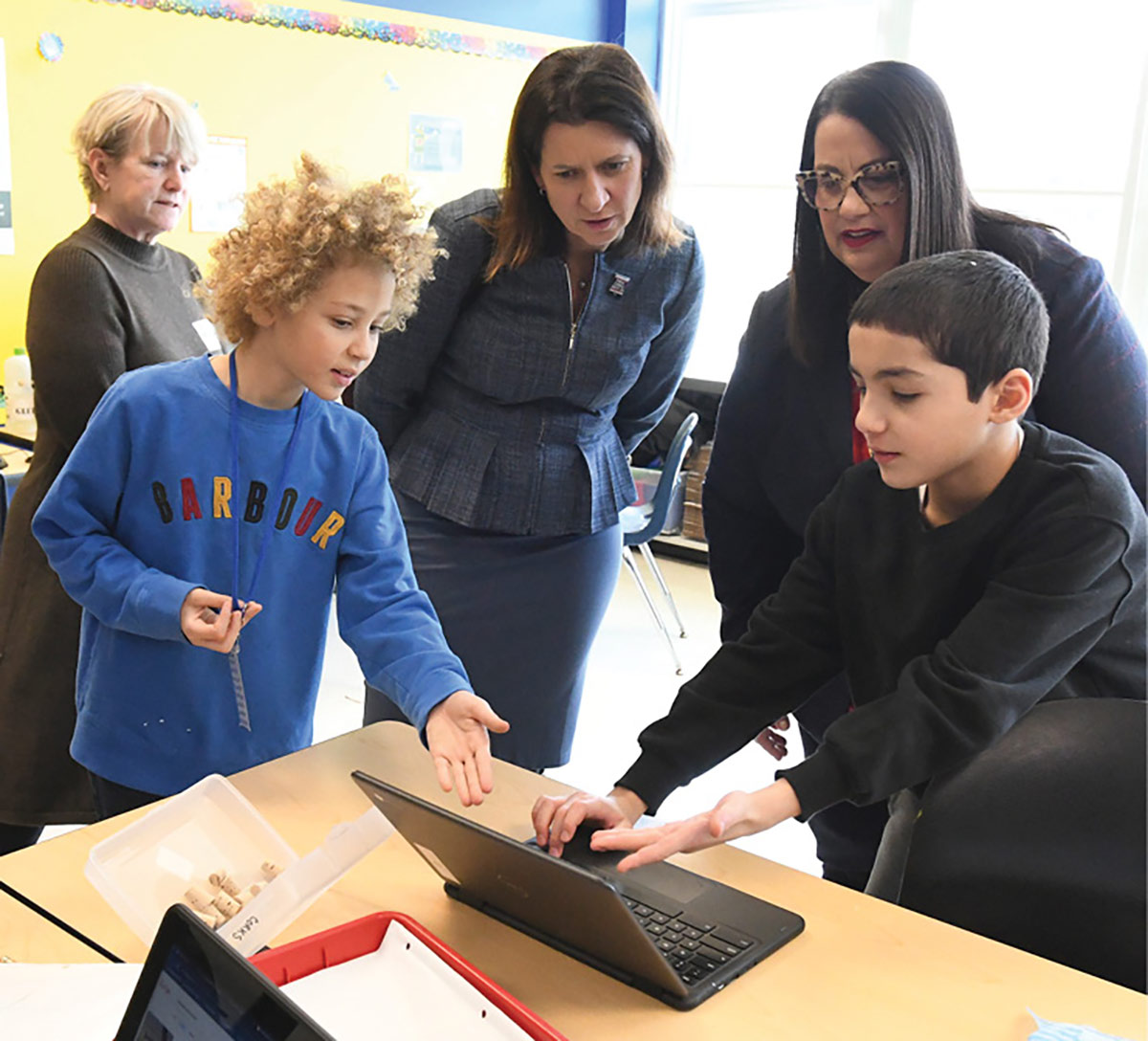To Our
Members


This is no surprise to you, our members, who see the growing effects of social media showing up in classrooms every day. In addition to taking up time kids might otherwise use for sleeping, studying and socializing, this technology is changing how our students view their bodies, their relationships and the world around them.
Even as they connect with more people online, even with the entire world of information at their fingertips, our students say they are lonelier and struggling with mental health more than ever.
At the same time, we know that every advance in technology has tremendous potential for our schools.
I’ve traveled the state speaking with educators and administrators, and so many of our members have pointed to the benefits of using tools like artificial intelligence and 3-D printing.
Educators are guiding students to connect with one another and the world around them using new technology and communication platforms. Courses that emphasize hands-on experiential learning in these realms are preparing our kids for the jobs of the future.
Herein lies the challenge: The state should be investing in more of these modern, high-tech courses. And there also must be guardrails in place to ensure that in our classrooms, technology continues to serve people, and that technology in education puts students and teachers at the center.
Educators, parents, elected officials and advocates must make sure these influences remain in their proper places, and that our students also enter the world equipped with the powerful skills formed through human relationships.
This balance is no easy task. NYSUT is backing state legislation that would curb addictive elements of social media platforms, as well as create safeguards to protect kids’ online data.
We are also backing you. We know that you care deeply about our students, and you make difficult decisions every day to strike the right balance for their academic success and mental wellness.
Smartphones especially can be major distractions, and educators don’t want to be the “cellphone police.” The measures taken to restrict phones in school vary widely, and in many cases are inadequate.
So we are speaking with educators across the state about the strategies that are working to harness the power of technology. We are learning about creative ways that schools have limited cellphone and screen use to emphasize mindful interpersonal connections.
At Newburgh Free Academy, for example, cellphones are locked in pouches all day, including during lunch. Both educators and kids say that students’ confidence and mental health have improved, and online bullying has decreased.
We are compiling this information to help equip each of our schools and educators with the tools they need to navigate this ever-present, ever-changing dynamic.
Thank you for your continued commitment to our children and their futures, even as the challenges we face shift in size and shape. There is no one right answer, but together we will use our collective knowledge and expertise do what is best for students.


